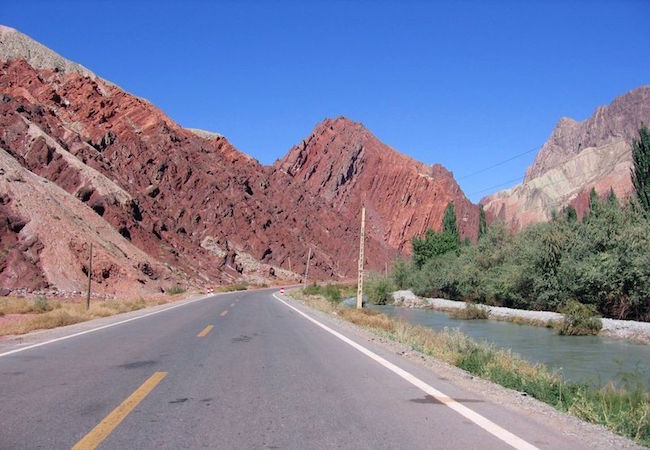
By Hira Qadeer Khan
In the globalized world of today, CPEC holds enough importance in the South Asian region, as it plays a crucial role in creating networks that connect countries socially, economically and politically. The China Pakistan Economic Corridor (CPEC), also known as a multi-billion dollar project is heralded as a game changer for Pakistan’s economy and regional cooperation. An extension of China’s ambitious Initiative, ‘One Belt, One Road’ (OBOR), aims to connect Asia with Europe, the Middle East and Africa via roads, railways, pipelines, communication networks and industrial economic zones. The principal purpose of this project is to link the Gwadar Port in southwestern Pakistan to northwestern region of Xinjiang in China and to provide Pakistan energy and communication infrastructure.
China and Pakistan have developed strong bilateral trade and cooperation over the years now. China has gradually emerged as Pakistan’s major trading partner both in terms of imports and exports. Initially, it was in 1963 when both the countries signed their first bilateral long term trade agreement, the establishment of their commercial links. In 2006, they signed the Free Trade Agreement (FTA) that was implemented in 2007. FTA was also signed on Trade in Services in 2009 that became active in the end of that year.
Pakistan is an important partner in the CPEC due to its exceptional geographical location that facilitates CPEC in smooth connectivity between South and East Asia. It has become the main hub of trade activities between countries within the region. This geographical location gives Pakistan the central role in terms of increased regional economic integration through CPEC. It brings huge economic potential and business opportunities for people.
The China Pakistan friendship in the form of CPEC is not only limited to strengthen the economic and trade ties between both countries but it also promotes common prosperity and development for the whole region. It is been noted that 3 billion people which is 40% of the global population will tend to benefit from this project. China has invested in many countries such as United States and Saudi Arabia and others and has managed only 2 to 3% in return, but it will gain more in Pakistan, from CPEC. Being the largest projects in history of bilateral relations between Pakistan and China the total cost of the program was estimated as USD 46 billion, though recently the figure has increased to USD 51 billion after China committed to fund the Karachi-Lahore rail line. It was planned that USD 34 billion would be spent on energy infrastructure and remaining amount is for basal infrastructures. The process of the largest regional project, the China Pakistan Economic Corridor (CPEC) is estimated to achieve its target by 2030.
It is also expected that the economic activities being undertaken under the umbrella of CPEC would represent a positive image of Pakistan and would serve as an incentive for companies from other countries to come and invest in Pakistan. The existing political and economic landscape of Asia is experiencing a new epoch of economic revival, bilateral and multilateral arrangements. The rise of China awakens hope and optimism of development for countries in the region. China highly believes in cooperation for the common interests and its remarkable progress has spread its influence across the borders. Through CPEC, Pakistan can said to be a rising regional power to balance her position against other regional powers in the South Asian region such as India. Who does not share much support for CPEC and had repeatedly opposed it. India also recently threatened Pakistan by isolating the country internationally but failed to do so. As Pakistan is now, considered an influential country internationally and it seeks worldwide investments.
But to what extent can that be useful to Pakistan if its own local industries are being affected by it. Here, the construction of CPEC raises numerous concerns that need to be addressed. The impact of CPEC on the country’s domestic industries can be worst especially those that are at the stage of infancy or smaller in size vis-à-vis the gigantic Chinese industries. Flooding of the Chinese products is the greatest fear of Pakistani industries. The Chinese industries have been successful in achieving the economies of scale over the years because of a huge domestic market, industrial-friendly policies and scores of incentives from the government. The foremost priority of a country should be set by considering interest of the local industry and then borders for free trade could be opened up. Due to the already unsettled problems existing in Pakistan such as electricity and gas shortages, high production costs and the terrorism and extremism threat, the domestic industries have been unable to produce according to its full capacity.
The main concern is about the exports of the country as shipments have reduced to less than $20 billion from $24 billion in the past two years and are still on fall. According to IMF, the CPEC will help lift Pakistan’s economy as Chinese companies invest in Pakistan it will increase the country’s foreign direct investment and other funding inflows but it may face difficulties in the longer run in repaying them back. This is evident from the IMF report that showed the imports under CPEC could rise up to 11 percent of the total projected imports which is equal to $5.7 billion. And the exports will touch 2.2 percent of the projected GDP in the year 2020. The country’s external financing needs from $11 billion for the current fiscal year will increase to $17.5 billion in 2020.
Since it will take time to improve the pace of inflow to the country, Pakistan needs to be cautious about the increasing CPEC related outflows because the repayment obligations on the loans taken from Chinese banks will most probably rise after the year 2021. However, the IMF is certain about the corridor in clearing these payments but that too in the longer run with no guarantee. Therefore the unmanaged outflows can prove to be detrimental to Pakistan’s economy in the longer run. CPEC should facilitate Pakistan in bringing up its infant industries and enabling them to compete in the international market. It will only be beneficial for Pakistan if it boosts its exports.
Pakistan’s economy is highly complementary to that of China and exists in a win-win cooperation of investment, energy, human capital and technology. China is specialized in technology but it needs market for its products and raw materials. On the other hand, Pakistan has abundant intact raw material but needs access to technology to list its industrialization process. Other than this Pakistan has abundant of labor that it can offer. It is one of those countries with highest youth population, by giving them basic skills and training, they can easily be consumed by Chinese industrial sector. This will also provide employment opportunities for the people that have been unemployed for a long time.
Moreover, the free trade agreement (FTA) between China and Pakistan also did not benefit the latter much as the arrangement gives an edge to China and promotes more imports than exports from Pakistan. Therefore, Pakistan should be careful in signing the second phase of FTA with China in future. The cooperation of both the countries in tackling the shortcomings of the project is highly advised. Pakistan needs to be given some leverage for its products to enable the local industry to compete well against its competitors. Overall, CPEC is supposed to be a win-win situation that would bring gains to both the partners without exploiting each other through dumping of goods or high price wars, for Pakistan, its exports need to be improved in order to facilitate its local production
In order to achieve full potential benefits of the CPEC, it is necessary to take effective measures to mitigate the risks within the country. When the country is strong internally it will perform well at the external level. First of all there is a dire need to protect the local industries by framing polices that aims to offer incentives for boosting productivity and pushing exports. Thus empowering the local producers and enabling them to compete successfully on the international level. Secondly, there is a need to strengthen the institutions that will ensure a check and balance on trade practices so that no unfair or illegal trade takes place. Thirdly and most importantly, the right atmosphere needs to be provided for CPEC that includes an improved climate conditions, good governance and a securitized environment to enable CPEC investments to generate the resources that can be used to cover their own associated outflows.
Hira Qadeer Khan works for Strategic Vision Institute in Islamabad, Pakistan




